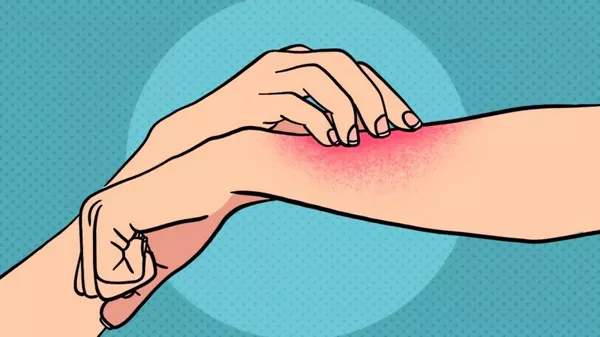Eczema, also known as atopic dermatitis, is a common skin condition characterized by red, itchy, and inflamed skin. It can be a chronic and distressing condition, affecting individuals of all ages. While there are various treatment options available, hydrocortisone cream stands out as a widely recognized and effective remedy for managing eczema symptoms. In this article, we delve into the specifics of hydrocortisone cream, exploring its uses, benefits, and considerations when treating eczema.
What is Hydrocortisone Cream?
Hydrocortisone cream is a topical medication that belongs to the corticosteroid family. Corticosteroids are synthetic drugs that mimic the effects of cortisol, a hormone naturally produced by the adrenal glands. Hydrocortisone cream is available over-the-counter (OTC) in various strengths and is commonly used to relieve itching, inflammation, and irritation associated with skin conditions like eczema.
How Does Hydrocortisone Cream Work for Eczema?
In eczema, the skin’s barrier is compromised, leading to increased inflammation and susceptibility to irritants and allergens. Hydrocortisone cream works by reducing inflammation and suppressing the immune response in the affected area. It acts on multiple levels within the skin cells to inhibit the production of inflammatory substances, thereby alleviating symptoms such as itching, redness, and swelling.
The cream is applied directly to the affected skin, where it is absorbed into the deeper layers. Once absorbed, hydrocortisone cream binds to specific receptors in skin cells, triggering a cascade of anti-inflammatory effects. By reducing inflammation, hydrocortisone cream helps restore the skin’s barrier function and provides relief from eczema symptoms.
Indications for Hydrocortisone Cream Use in Eczema
Hydrocortisone cream is recommended for the temporary relief of mild to moderate eczema symptoms, including:
1. Itching: Hydrocortisone cream effectively relieves itching, which is often a primary complaint among individuals with eczema. It helps break the “itch-scratch” cycle, reducing discomfort and preventing further skin damage.
2. Redness and Inflammation: The anti-inflammatory properties of hydrocortisone cream help reduce redness and inflammation associated with eczema flare-ups. This can lead to visible improvement in the appearance of affected skin.
3. Dryness and Irritation: Eczema-prone skin is often dry and prone to irritation. Hydrocortisone cream helps moisturize and soothe the skin, enhancing comfort and promoting healing.
Choosing the Right Hydrocortisone Cream
Hydrocortisone cream is available in different strengths, typically ranging from 0.5% to 1% concentrations. Lower-strength formulations (e.g., 0.5% hydrocortisone) are suitable for mild eczema and can be used on delicate areas such as the face and groin. Stronger formulations (e.g., 1% hydrocortisone) are reserved for moderate symptoms on thicker skin areas like the hands and feet.
It’s important to follow the recommendations of healthcare professionals or pharmacists when selecting a hydrocortisone cream. They can provide guidance on the appropriate strength based on the severity and location of eczema symptoms.
Application and Usage Guidelines
When using hydrocortisone cream for eczema, it’s essential to adhere to specific guidelines to maximize effectiveness and minimize potential side effects:
1. Cleanse and Dry the Skin: Before applying hydrocortisone cream, gently cleanse the affected area with a mild soap and water. Pat the skin dry to ensure optimal absorption of the medication.
2. Apply a Thin Layer: Use a small amount of hydrocortisone cream and apply it thinly and evenly over the affected skin. Avoid excessive application, as this can increase the risk of side effects without providing additional benefits.
3. Avoid Certain Areas: Hydrocortisone cream should not be applied to sensitive areas such as the eyes, mouth, or broken skin. Use caution when applying near these areas to prevent irritation.
4. Monitor Usage Duration: Hydrocortisone cream is typically recommended for short-term use (1-2 weeks) to manage eczema flare-ups. Prolonged or excessive use can lead to skin thinning and other side effects.
5. Follow Up with Healthcare Provider: If symptoms persist or worsen despite using hydrocortisone cream, consult a healthcare provider for further evaluation and alternative treatment options.
Potential Side Effects and Precautions
While hydrocortisone cream is generally safe when used as directed, there are potential side effects and precautions to consider:
1. Skin Thinning: Prolonged use of high-strength hydrocortisone cream can cause thinning of the skin, especially in sensitive areas or with excessive use.
2. Skin Irritation: Some individuals may experience mild irritation, burning, or stinging at the application site. Discontinue use if these symptoms persist or worsen.
3. Allergic Reactions: Rarely, individuals may experience allergic reactions such as rash, swelling, or difficulty breathing. Seek immediate medical attention if allergic symptoms occur.
4. Interaction with Other Medications: Inform your healthcare provider about any other medications or skincare products you are using, as they may interact with hydrocortisone cream.
Conclusion
Hydrocortisone cream is a valuable tool in the management of eczema, providing rapid relief from itching, redness, and inflammation. When used appropriately and under the guidance of healthcare professionals, hydrocortisone cream can significantly improve the quality of life for individuals with eczema. However, it’s essential to use hydrocortisone cream judiciously and monitor for potential side effects to ensure safe and effective treatment outcomes. Always consult a healthcare provider for personalized recommendations and to explore alternative treatment options if needed.
Related Topics:


























